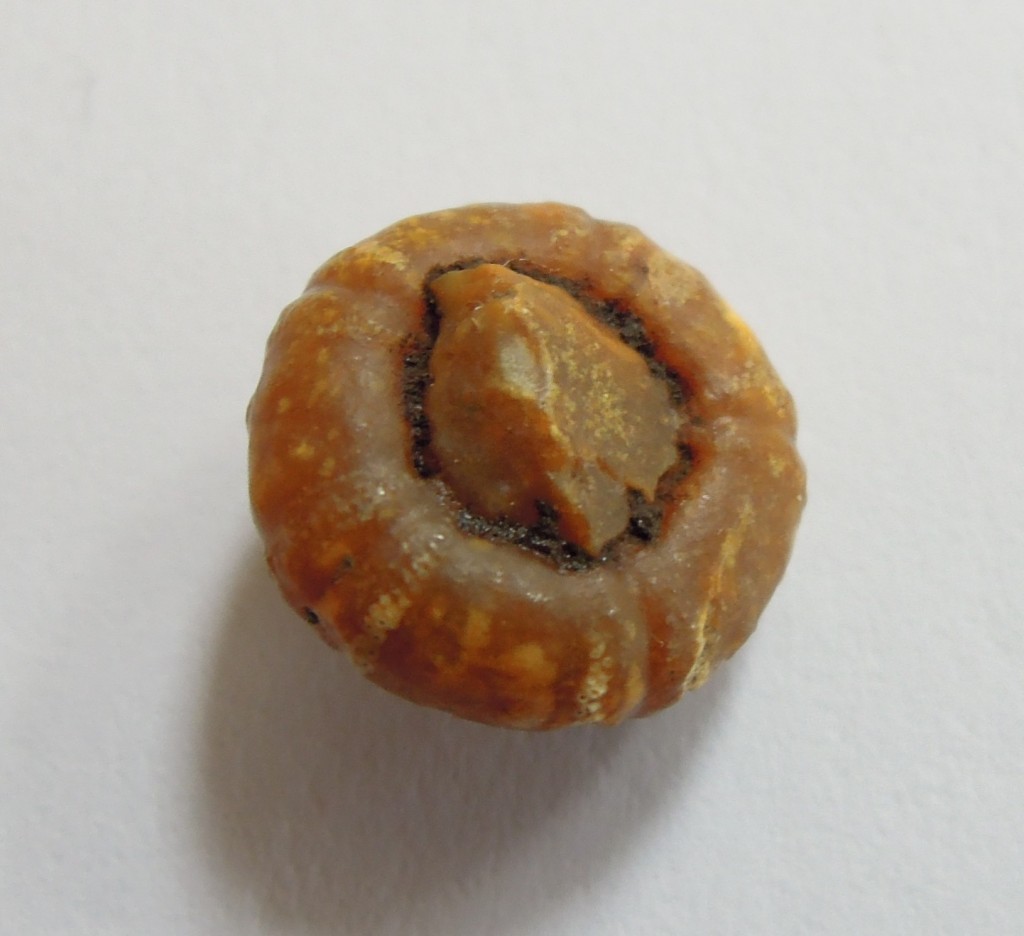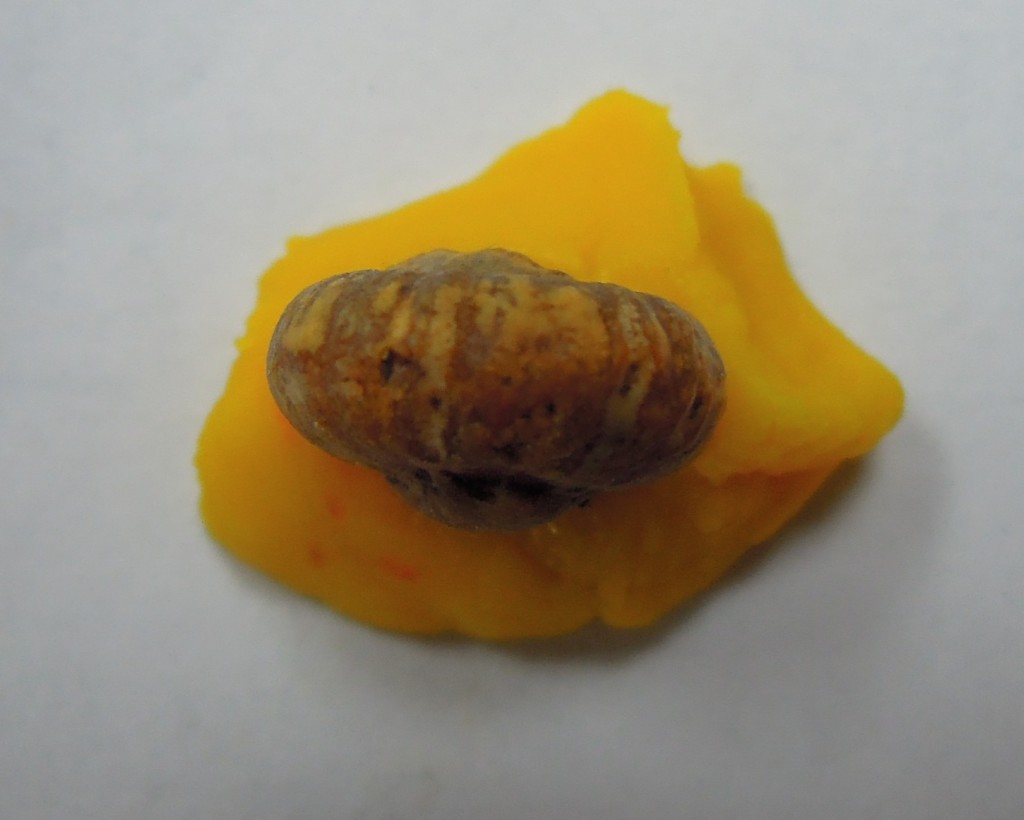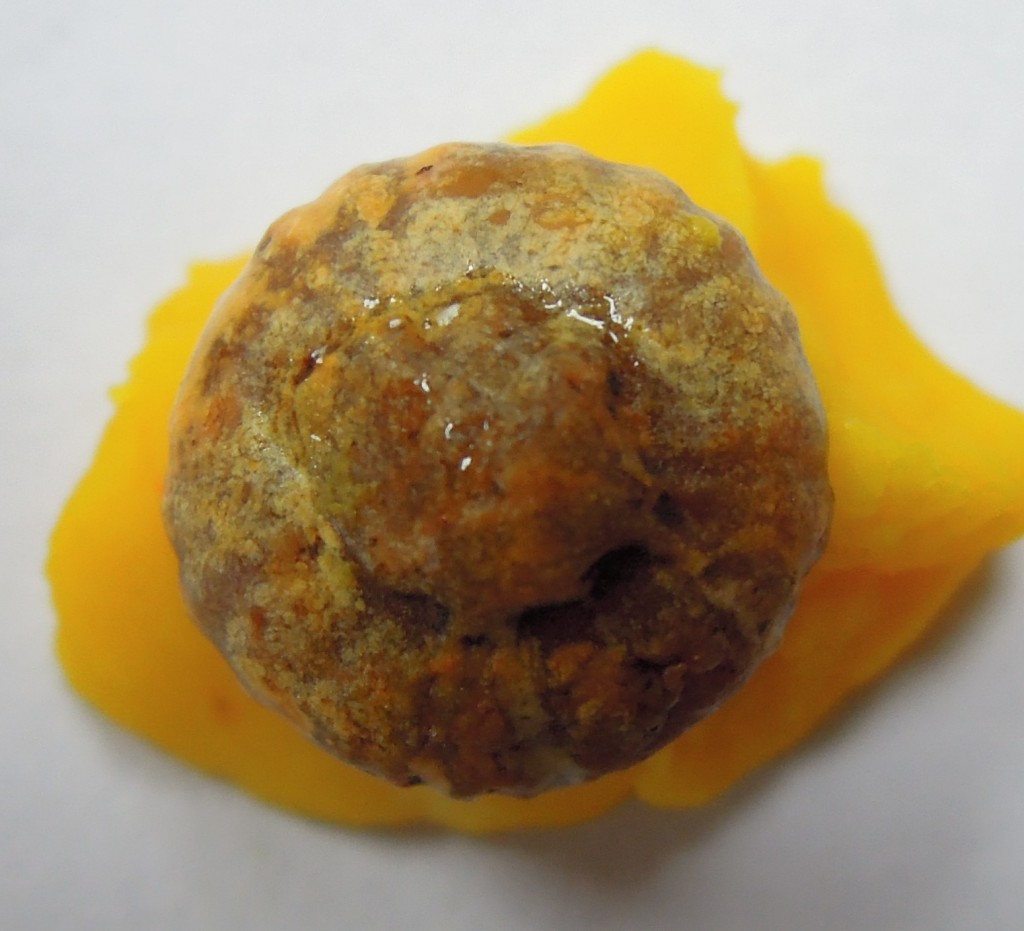I was digging in my garden yesterday and I saw something that looked like a curled up grub sitting on the soil. I picked it up and realised it was once alive, but hasn’t for quite some time.
Here’s an end on view, showing why I thought it was a grub hunched over itself. Note the ridged appearance.
It was a fossil echinoid, or sea-urchin to use its every day name. It is quite small (1 cm across) and quite lovely. I was quite excited as I never expected to find a fossil in my garden. The underlying geology is recent (post-Cretaceous) sediments but my garden sits on an old Thames river terrace. This is mostly gravel and you don’t get fossils in gravel. Or so I thought.
I was also excited as I’d just got a new camera with a macro setting for close-up pictures. I can take a hint from coincidence, so here we are.
A view of its underside. Note how the ridges we saw above curve down under. Towards the bottom of the image you can see little dots in an areas between two ridges. These are pore-pairs and are where the echinoid’s tube-feet were attached. If you look carefully, you can just about make out a five-fold symmetry that is very distinctive of this group of animals (echinoids) and is rather more obvious in starfish.
Here’s a view of the other (top) side.
Again there is a ragged lump in the middle, which is a clue to how this fossil ended up in my garden. Echinoderms have a strong shell, but the middle of the top and bottom surfaces is open or covered by fragile bits of shell. This is so it can get food in and then out again. These more fragile bits are rarely preserved. This fossil is made of flint which will have replaced or infilled the actual shell. The impression of the shell will have been within a larger piece of flint – the raggedy bits are where the large piece broke up, revealing the fossil within.
Picture yourself in the Cretaceous. There’s a warm sea, which is shallow but weirdly there is no land in sight. A baby sea-urchin is burrowing in the chalk mud living a full and happy life – the white mud it frolics in suits it just fine. Eventually death comes and our hero ends up in a mass grave (that nice white mud is actually billions of algae corpses, or coccolithophores). More corpses lie on top, and things warm up a little. Silica and water zips around and our hero ends up entombed in flint. Fade to black.
A new scene, a chalk outcrop in a world that looks much like ours, only there are no people. A lump of flint is eroded out of the chalk and slides downhill. Below lies a river that will one day be called the Thames.
Now the Thames is flowing hard. It’s hard bouncing and banging along the river bottom and something has to give. With a muffled clonk that no-one hears, the flint pebble fractures and something beautiful appears – our hero. It’s now exposed to the jostling and banging, but soon reaches quiet water and is covered by more flint.
We reach the present day. The gravel terrace has been mixed up by frost-thaw action during periods of near Arctic conditions (ice ages) and the top layer is now mixed in with dead plant matter to form soil. A spade turns the soil and our hero finally reaches the surface again, where someone can find him and tell his story.



I love your story … a great way (for me anyway) to think about the historical geology of an area.
My brother suggested I might like this website.
He was totally right. This post actually made my day. You
cann’t imagine just how much time I had spent for this information!
Thanks!
Do you have a spam problem on this website; I also am a blogger, and I was
wondering your situation; we have created some nice practices
and we are looking to exchange solutions with other folks, be sure to shoot me an e-mail if interested.